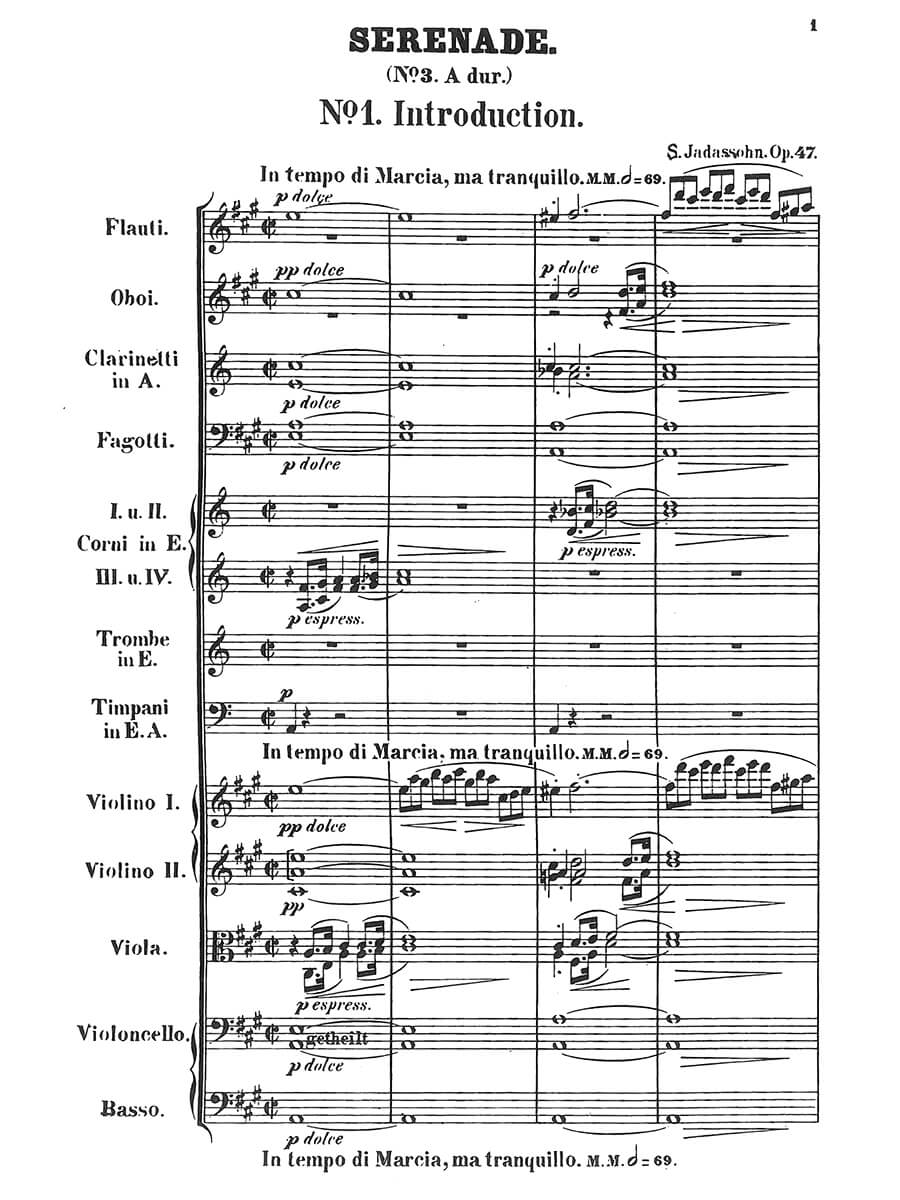Serenade No. 3 in A major for Orchestra op. 47
Jadassohn, Salomon
31,00 €
Preface
Salomon Jadassohn – Serenade No.3 in A major for Orchestra op.47
(b. Breslau, 13 August 1831 – d. Leipzig, 1 February 1902)
I Introduzione in tempo di marcia p.1
II Cavatina ed Intermezzo p.35
III Scherzo a capriccio p.61
IV Finale p.112
Preface by Christina Schnauß, 2018, Translated by Brigid Purcell
The composer Salomon Jadassohn was a significant figure in Leipzig musical life in the second half of the 19th century. Regrettably, following his death shortly after the turn of the century he rapidly faded from memory, due in no small part to the reproach already circulating during his lifetime that from time to time he sounded just like Spohr or Schumann1. In addition, Jadassohn was unwilling to open his mind to the new musical trends. As a result he suffers a similar sorry fate regarding his posthumous reputation to the composer Max Bruch (1838-1920), another Rhinelander. This edition is intended to reawaken an intensive engagement with Jadassohn’s music. In this context the recently published recordings of some of his works are welcome, likewise enabling better access to the composer.
The Serenade No.3 in A major for Orchestra op.47 was published in Leipzig by Breitkopf & Härtel in 1876.2 Together with the Serenade in Four Canons op.42 and the Serenade No.2 in D major op.46, Jadassohn created three works in this genre.3 In contrast to the other two orchestral serenades, No.3 has a four-movement structure. The sequence of movements, consisting of an Introduction, a slow movement and the Scherzo as well as the Final Movement – expressly designated as such – futher signifies a proximity to the symphonic genre. If one compares the Serenade before us to Jadassohn’s Sinfonie No.2 in A major for Orchestra op.28, one finds formal as well as idiosyncratic similarities between the two works: alongside the basic key of A major and the four-movement structure, there is an almost identical overall length. The opening movements of both Serenade and Symphony convey a fundamentally lively character which is emphasised by, for example, a dotted melody with an accompaniment in triplets. In terms of historical reception, it may be noted that the Serenade No.3 – as, incidentally, the Symphony No.2 twelve years before – elicited a positive response.4 5 The composer himself conducted his work on the occasion of the ninth Gewandhaus concert on 16th December 1875.6 The usual criticism in reviews of Jadassohn’s conservative style of composition appears relatively mild in the assessment concerned. Here the critic of Signale für die musikalische Welt [Directions in the Musical World] describes the performance in the following words: “He does not wish to appear greater than his actual level of ability, and never tries to fool the world into thinking that he is of a profound disposition. Congeniality and capaciousness of melodic invention, smoothness of relations between the sections and general beauty of sound are for him the most important things, for the sake of which he is content to do without the fame of a composer offering singular and unusual work. The Serenade under discussion [owes] […] its success […] to the good qualities it bears.”
Read full preface > HERE
Score Data
| Edition | Repertoire Explorer |
|---|---|
| Genre | Orchestra |
| Size | 210 x 297 mm |
| Printing | Reprint |
| Pages | 162 |
